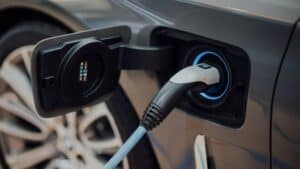As India is speeding up not too far off from improvement, there are a large number of road obstructions we need to handle prudently: the soaring fuel costs, the increasing blockage and the developing carbon impression the future is EV.

At present, there are around 300 million interior burning motor (ICE) vehicles on our streets, with an expected yearly expansion of 30 million consistently.
We are relied upon to surpass China as the most crowded country on the planet by 2027.
India is third on the rundown of nations with the biggest carbon impression, with 25% of the contamination contributed by ICE vehicles .
With populace, contamination and blockage dashing each other to the end goal, it is essential that we roll out some considerable improvements to our versatility and assembling areas before it’s past the point of no return. However the issues are many, the arrangement is single and clear: going electric.
For the most recent few years, the focal government has been forcefully putting resources into this ‘sparkle of expectation’ with the essential target of developing mindfully. The FAME I and II plans were to accelerate the set-up of charging stations and expand purchaser sponsorships that will give EV OEMs the right push to connect the business hole with their ICE partners. Nearly 13 states have supported/informed committed arrangements as far as enrolment expense waivers, street charge exceptions to advance electric vehicle (EV) reception.
While it is an easy decision that zap is the genuinely necessary distinct advantage to change metropolitan versatility, we should not get bushwhacked by unreasonable courses of events or impossible targets. Our objective of 30% EV reception by 2030 is definitely not an incomprehensible one yet it’s anything but a simple one all things considered.
To completely energise our country’s EV desire, we need to venture back and distinguish the significant holes in our course of action. Really at that time would we be able to step up the progress cycle and find the worldwide EV pioneers. We should investigate the unmistakable obstacles in our EV guide which we need to address on need:
Inflexible Consumer Psyche
It is commonplace human instinct to be loath to change, particularly when it includes something as significant as putting resources into an individual vehicle. In India, purchasing a vehicle is viewed as an extravagance, particularly in case it is a vehicle. Petroleum and diesel-driven vehicles have been ruling the Indian streets for over seventy years, so an abrupt progress to electric vehicles may be hard to pull off because of the accompanying components:
Absence of mindfulness: While the twenty to thirty year olds and Gen Z individuals in level I and level II urban areas know about the approaching environmental change and comprehend the direness behind the need to change to reasonable methods of transportation, the idea of an EV is as yet strange to most of Indians in the provincial pockets of our country.
Delay to contribute: Even the customers who are completely mindful of how EVs can add to controlling contamination and clog are wavering about really contributing. An overview by Deloitte Global has uncovered that 68%3 of Indians would like to buy the “attempted and tried ” ICE vehicles. This dithering is ascribed to various client concerns including range nervousness, irregular charging infra, greater cost edges, long charging hours, wellbeing concerns and absence of decision.
Absence Of Charging Infra
Lacking charging foundation is one of the significant worries that discourages likely purchasers from focusing on an EV. Given our EV aspiration, India would require a venture of $180 billion and an organization of $2.9 million public charging by 2030. As of now, we just have around 1,000 or more focuses across the entire country, which is practically immaterial.
Reliance On Imports
With regards to assembling, we are vigorously dependent on parts and materials made in different nations. The battery and force gadgets alone expense around 66% of the expense of an EV. Exploring different avenues regarding new battery innovation and restricting all the assembling measures are vital to make a scratch in the marketing projections.
Overseeing Old Batteries
End-of-life the executives of batteries is another test we would ultimately wrestle with, when the quantity of EVs shoots up. The normal life expectancy of a lithium-particle battery goes from 6-8 years, after which it should be supplanted and reused. This is another last detail that the public authority and OEMs need to restrict by setting up a feasible and obligatory reusing/repurposing measure.
However we are looking great so far, the public authority, OEMs and shared mobilities players must be continually in a state of harmony to spread mindfulness, twofold down in support of EV arrangements and set up a container Indian charging foundation organization. Time and system are of embodiment right now as we are at an expression point that could deconstruct our whole economy. I’m certain that with productive designation, tenacious development and at risk responsibility, we can lay the foundation for a vigorous portability network that is feasible, associated and advantageous.
However the excursion ahead is a burdensome one, our objective is most certainly awesome. We should cross this crucial achievement together.







